How to Keep Mosquitoes Away for Good

Mosquitoes are one of the most dreaded and prevalent pests in the summer—they aren’t just a nuisance, they can actually pose a health threat.
In this guide, we'll walk you through how to keep mosquitoes away, and we'll answer a few important questions: What attracts mosquitoes? Are mosquitoes dangerous? What are some DIY methods to keep mosquitoes away?
That’s where we come in—our guide gives you the best DIY methods to prevent and chase away mosquitoes using:
- Gardening best practices and mosquito-repelling plants
- Essential oils
- Citronella
- Citrus fruits and mosquito-repelling herbs
- Fire and smoke
- Mouthwash
These are natural prevention methods that won’t fog up your yard with clouds of chemicals.
Why not use pesticides?
Why Are Mosquitoes Important?
As incredibly pesky as mosquitoes can be, they have an important purpose in our ecosystem. It may seem hard to believe, but mosquitoes are pollinators and they prefer drinking nectar over our blood.
They also serve as food for certain beloved creatures, like dragonflies, hummingbirds, turtles, frogs, and bats. So don’t hate mosquitoes too much.
What Attracts Mosquitoes?
You may feel compassion for mosquitoes when you hear that males are busy pollinating and don’t care about human blood; it’s the pregnant females who need your blood for an extra energy boost.
The females follow carbon dioxide plumes and other scents you are giving off, which is why they tend to hover around your face.
Science has not yet figured out why mosquitoes like to bite some people more than others, but theories point to differences in diet, blood type, and other genetic factors.
Are Mosquitoes Dangerous?
The fact that you’re feeding a bug with a bun in its oven doesn’t mean you should turn yourself into a blood bar for the neighborhood’s pregnant mosquitoes. Most mosquitoes are harmless.
But, they can potentially carry many types of diseases, depending on which part of the world you live in, such as West Nile, Zika, yellow fever, dengue, and malaria.
Although it’s unlikely you will contract any of these diseases, it helps to be mindful and take steps to reduce their bites—especially for your itch-free comfort.
Disclaimer: Hometalk may receive a small affiliate commission from purchases made via links in this article but at no cost to you.
How to Prep Your Yard to Keep Mosquitoes Away
This method requires plenty of elbow grease in the garden and around your yard.
Step 1 is probably the most important one you can take. The goal of this step is to control the proliferation of the aquatic larval stage.
Tools and Materials:
Step 1: Remove Water
Eliminate or amend sources of standing water where mosquitoes can potentially breed, which include:
- Baby pools
- Birdbaths (empty and refill every two days to disrupt the larva stage)
- Divots in the ground that collect water (fill them in with grass seed)
- Gutters
- Plant containers (empty) or saucers filled with water
- Rain barrels (Take steps to protect the rain barrel water from mosquitoes, such as putting goldfish into the water so they can feast on the larva.)
- Swimming pool covers
- Tires
- Wheelbarrows
Step 2: Clean Up Greenery
Trim away ivy and decaying leaves around your yard. They are cool places where mosquitoes like to live. Cut down tall grasses that also make welcome homes for mosquitoes.
Step 3: Plant for Wildlife
Invite predators with plants that attract hummingbirds and dragonflies, such as the following:
- Black-eyed Susan for dragonflies
- Water lilies (if you have a pond) for dragonflies
- Tall wispy water plants for dragonflies
- Brightly colored (hummingbirds love red), tubular flowers that hold nectar for hummingbirds such as daylilies, bee balm, and foxglove
Step 4: Plant Mosquito-Repelling Herbs
You can easily make mosquito repellent planters, like these (and pictured above) by Ahna Fulmer a pot, potting soil, lavender, and mint.
- Fill the pot halfway with soil
- Plant the lavender in the back, and secure it with more soil
- Then add two mint plants in the front
- Fill the pot completely
With these planters strategically placed around the patio, you can enjoy your outdoor space while minimizing mosquito bites.
How to Keep Mosquitoes Away with Essential Oils
If you’re prone to mosquito bites, you may want to try a natural mosquito repellent with essential oils, like this one by Carol Speake of The Gardening Cook to spray on your skin.
A DIY spray will not contain DEET, a highly effective ingredient in most bug sprays that masks your scent, but it may also cause reactions if used frequently, heavily, long-term, and on too much of the body.
Tools and Materials:
- Essential oils such as lavender, lemongrass, eucalyptus, catnip, cinnamon oil, thyme oil,
- A base ingredient such as witch hazel, vinegar ( apple cider or white), coconut oil, rubbing alcohol, lemon juice
- Almond oil (another carrier oil that may be necessary to reduce reactions)—optional
- Water
- Spray bottle
Steps:
- Add 1/4 to 1/3 cup of the base to the spray bottle.
- Add the same amount of water to the spray bottle.
- Add an ounce of almond carrier oil (optional step).
- Add 20 to 40 drops of your essential oil(s), whichever amount you prefer. Mix thoroughly.
- Test spray on a small area of skin to watch for any allergic reaction (rash). If there’s no reaction, feel free to spray on your body.
How to Keep Mosquitoes Away with Citronella
Mosquitoes rely on their sense of smell to find us, targeting scents like body odor and carbon dioxide. Citronella oil disrupts this process by releasing citronellal and geraniol, chemicals that effectively mask these attractive scents.
On top of that, citronella oil works as a mild irritant to mosquitoes, further driving them away from the area. This two-pronged approach makes citronella oil a natural solution for repelling these pesky insects.
The below video tutorial shows you how to make citronella candles to repel mosquitoes, but with a decorative balloon twist:
Tools and Materials:
- Glass containers
- Soy wax flakes
- Balloons
- Candle wicks
- Citronella oil
- Pencil
- Hot glue gun
Steps:
- Attach the wick to the bottom center of the glass with hot glue.
- Melt the soy wax flakes following package instructions. Add citronella oil (50 drops per 1 cup of wax).
- Pour the wax halfway into the glass and let it harden for 2 hours.
- Trim the wick to ¼ inch.
- Cut a balloon with the neck removed and a small snip at the tip.
- Carefully stretch the balloon over the bottom half of the glass, creating a whimsical, uneven shape.
How to Keep Mosquitoes Away with Citrus Fruits & Herbs
Some studies suggest citrus peels contain limonene, which may repel mosquitoes. However, the effect is likely weaker than citronella. Likewise, there is limited scientific evidence that herbs like rosemary, basil, and lavender repel mosquitoes.
However, the above DIY luminary project by Kate Rodgers of Southern Home and Hospitality combines mosquito-repelling citrus fruits, fresh herbs, candles, and essential oils, to great effect:
Tools and Materials:
- Quart-size mason jars or similar glass containers
- Floating candles (size depends on jar)
- Fresh herbs (rosemary, basil, lavender, etc.)
- Lemons or limes (few slices)
- Water
- Essential oils (lemon, lemongrass, citronella, etc.) - optional
Steps:
- Cut lemon/lime and herbs, place in the jar.
- Add 15-20 drops of essential oil (optional).
- Fill the jar with water, submerging herbs and citrus.
- Place a floating candle on top.
Tips:
- Use fake greenery if fresh herbs aren't available.
- Make several jars to spread around your outdoor space.
- Consider a large jar as a centerpiece.
- Flowers can be added for extra color.
These hanging jar mosquito-repelling luminaries by TANGLEWOOD HOMES also keep pesky mosquitoes away while also bringing a cozy ambiance to your outdoor space.
How to Keep Mosquitoes Away with Fire & Smoke
Mosquitoes do not like the strong smell of fire and smoke, either, which is why candles and burners are so effective at keeping them away.
If you’re having a party outdoors, keep a fire pit going as a respite and mosquito-free area of your yard.
Or make a mosquito repelling burner out of recycled materials, as August December Home did with tin cans and cardboard (image above).
Tools and Materials:
- Wire (8-12 inches long)
- Large tin can (e.g., spaghetti sauce can)
- Drill and small drill bit (or hammer and nail)
- Cardboard drink holders (like from fast food)
Steps:
- Drill holes near the top of the can for hanging (use a smaller drill bit or hammer and nail if needed).
- Drill additional holes throughout the can for airflow and smoke circulation (optional hole in the lid too).
- Light a piece of cardboard drink holder, extinguish the flame, and place it in the can. The smoldering cardboard will create smoke to repel mosquitoes.
- The wire handle lets you carry or hang the repellent. You can adjust the smoke output by opening/closing the lid with the wire.
Tips:
- The wire may get hot, so avoid using plastic or paper for the handle.
- You can also experiment by adding thyme leaves to your fire; burning thyme leaves may deter mosquitoes for an hour or more.
DIY Tiki Torches
If you'd rather not have a full fire blazing in the middle of summer, you could always make tiki torches!
These DIY tiki torches are from wine bottles and do a great job of keeping mosquitoes away. There's also a similar DIY tiki torch tutorial by Vicki Rogers.
Tools and Materials:
- Empty wine bottle
- Marbles or rocks (optional)
- Tiki torch fuel
- Funnel (optional)
- Teflon tape
- 1/2" x 3/8" copper coupling
- Wick
- Strong adhesive (e.g., E6000)
- 4" Terra Cotta saucer (optional)
- Jute rope, seashells, or other decorations (optional)
- 1/2" copper cap (optional)
Steps:
- Fill a wine bottle with marbles or rocks for stability (optional).
- Pour citronella torch fuel into the bottle, leaving space at the top.
- Wrap teflon tape around a copper coupling until it fits snugly in the bottle's mouth.
- Insert the wick into the coupling and then the bottle.
- For extra stability, glue the bottle to a saucer (optional).
- Decorate your torch with seashells, rope, or other embellishments (optional).
- Use a copper cap to extinguish the flame when not in use.
Check out how to make your own tiki torch fuel for mosquitoes using vegetable oil and a repelling blend of essential oils, in this tutorial by Everything Pretty.
How to Keep Mosquitoes Away with Listerine
You can also make a mosquito repellent spray using Listerine mouthwash. It's a quick solution for unexpected mosquito problems.
Steps:
- Fill a spray bottle with Listerine.
- Spray the solution in your yard and around your body, avoiding direct contact with your eyes.
- The repellent effect lasts 30-40 minutes, so reapply as needed.
Of course, you can use any brand of mouthwash. Follow this tutorial from Debbie/Dragonfly Treasure to discover how to make a DIY mosquito repellent spray using mouthwash, beer, and Epsom salt.
Use a Fan
How to Keep Mosquitoes Away Indoors
If you see mosquitoes inside your home, Step 1 and Step 2 should be your first response to eliminate the bugs.
If you see one mosquito, it’s unlikely they will proliferate unless you have pools of water indoors (but we’ll get to that in a second).
Note: DIY mosquito traps involving yeast, Borax, or other ingredients are usually not very effective.
Step 1: Repair Openings
Go around your home and check for holes and rips in window and door screens. This is usually the culprit for mosquitoes indoors. Repair them even if it means you need to do it temporarily until the screen can be rescreened.
Note: Also, make sure there are no doors or windows propped open that are not screened.
Step 2: Check for Water
After checking screens, check your entire interior for standing water. You may find a small, hidden leak somewhere that’s attracting mosquitoes that have made it indoors to lay their eggs. Check even the saucers of your house plants; they may have standing water you need to pour out.
Step 3: Set Out Natural Repellent
Put out a small bowl of minced or crushed garlic; mosquitoes hate the smell. If there’s a mosquito indoors, it may try to run for the hills.
Step 4: Use Fans
Just like outdoors, make use of fans to ward off your scent to mosquitoes searching for carbon dioxide plumes.
Step 5: Swat or Zap
Buy a fly swatter or indoor bug zapper—they are not as loud or scary as they once were; try a zapper shaped like a small tennis racket to snuff out any wayward mosquito.
Step 6: Try Tea as a Repellent
If there’s an errant mosquito that you can’t catch, but you don’t want to be bitten in the middle of the night, rub some diluted tea tree essential oil on your skin. It’s better than rubbing garlic on your skin! Just add water and a few drops of the oil in a spray bottle (as much of the fragrance as you can tolerate), mix, and spray to keep the bugs away.
Step 7: Use Store-Bought Repellent
The last resort should be the use of EPA-registered indoor flying insect and mosquito repellents. They come in foggers, aerosols, or spray pumps. Use sparingly and only if the problem seems to be worsening.
Tips and Hacks for Difficult Cases
There may be plenty of areas in your yard where you cannot drain the water but will attract breeding mosquitoes, such as garden ponds, water gardens, natural troughs, or swampy landscapes.
Bacillus thuringiensis
There’s a natural soil bacterium, called Bacillus thuringiensis (aka Bt, and marketed as “mosquito dunks,” or “mosquito bits”) meant to eliminate mosquito larvae, in addition to some other pest flies.
See this tutorial from by Nancy MacDonald Wallace to learn how to use mosquito dunks in a birdbath.
It’s luckily harmless to humans and wildlife. Look for it in garden or home improvement centers.
More Tips for Keeping Mosquitoes Away
Do you have any tips for keeping mosquitoes away? Share your tips in the comments, we'd love to hear them.
Enjoyed the project?
Comments
Join the conversation
-
 Diane Asdourian
on Feb 21, 2024
Diane Asdourian
on Feb 21, 2024
rub a small amount of Vick’s Vapor Rub on your wrists, behind your ears, behind knees. Mosquitoes hate the smell!
-
-



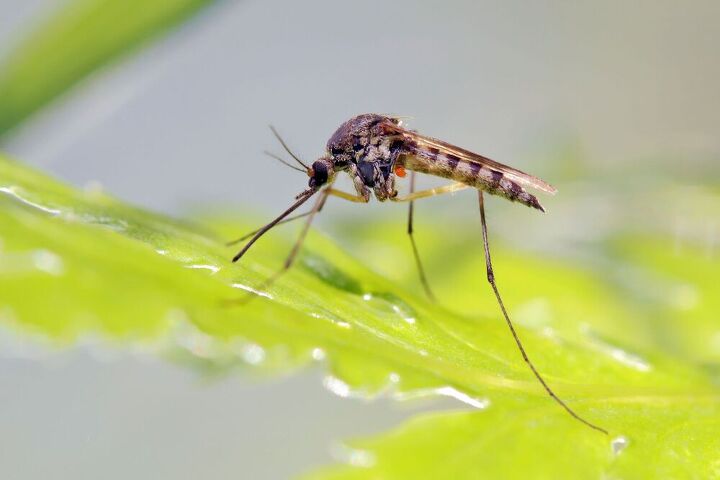




















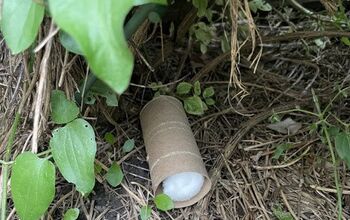



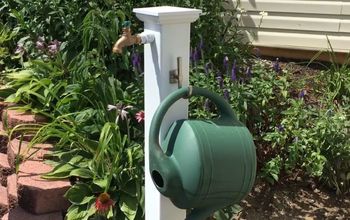
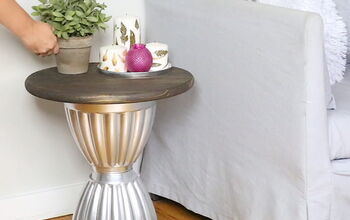
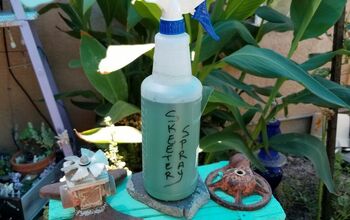
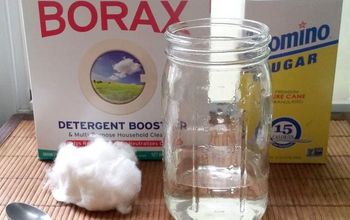

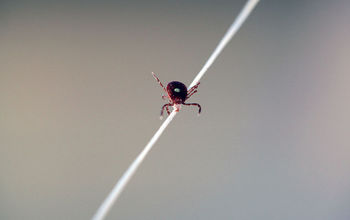

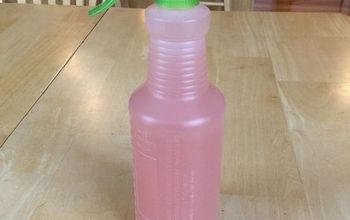

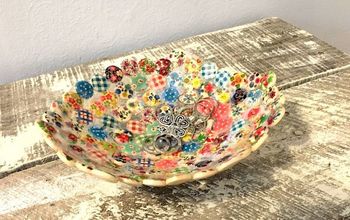

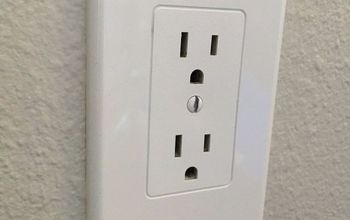
Frequently asked questions
Have a question about this project?